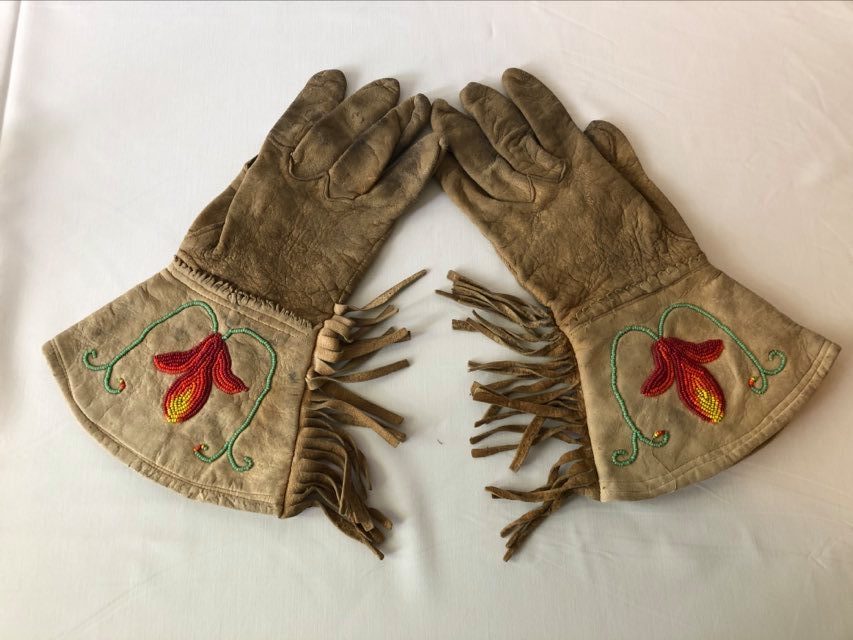Pictured below is a pair of traditionally made Assiniboine gloves from about 1900. They were hand made for James William Watson by a First Nations artist in Manitoba, likely a Lakota Sioux artist. In 1920 Watson made the 2000km journey from the Brandon Belmont area of Manitoba to a new residence in Port Haney. These gloves were among his possessions during his move and they stayed in Watson’s new home until he passed away in 1964. His son held them for 13 years before generously donating them to the Maple Ridge Museum in 1977. They have been in our collection since.

Unfortunately there is no written record of who made these gloves or why they were inclined to give them to Watson. They were made in Manitoba near Brandon and the town of Belmont; an area inside the North American Great Plains that has been Assiniboine (Nakota Sioux) territory for at least 10,000 years. Sioux culture is strongly entwined in the hunt of buffalo. Multiple Great Plains cultures, including the Sioux, were dependent on it as main source of food and materials. Their diet consisted mainly of meat from Buffalo, Elk, Deer, and was supplemented with wild roots and vegetables. Large areas of land are needed in order to feed a group of people through hunting. Game needs to be followed over its migration, which means land ownership and the resulting right to hunt strongly shaped the cultures of nomadic nations. During the 19th century the Canadian government through a series of enfranchisement acts, broke down the traditionally nomadic lifestyle of the Plains people, eventually getting treaties passed. Eventually the once nomadic people were confined to reserves. This drastic change in culture led to the need of artists to make traditional objects for sale to the settler populations, who had a strong desire for indigenous artistry as a curiosity.
The gloves are made from what is likely elk or deer leather and were hand sewn together. They were given to Watson near Brandon city Manitoba which is the home of the Lakota Sioux people. This is likely the nationality of the artist who gifted these gloves to Watson. The Sioux are considered a “Plains First Nation”, the same title given to the Cree and Anishinaabe among other First Nations.
This blog was researched and written by Darren Ragoonath, Douglas College